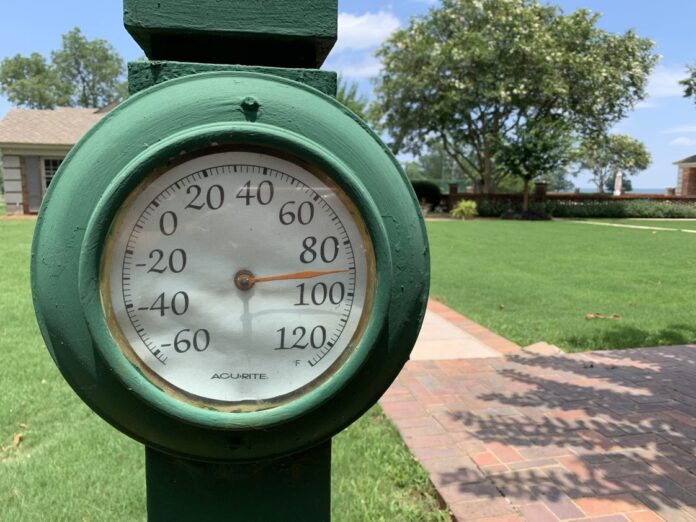AUBURN UNIVERSITY, Ala. — Outdoor work and recreation are difficult to enjoy when temperatures are hotter than a black cat on a tin roof in the middle of July. While summer is a popular time to be outside, Alabama heat and humidity are a brutal combination. With temperatures forecasted to reach the triple digits this week, many parts of Alabama are currently under an excessive heat warning. When spending time outdoors this week and throughout the rest of the summer, pay attention to the temperature and practice sun safety.
Tamara Warren, an Alabama Cooperative Extension System urban health and nutrition specialist, said sun safety is important year-round, but especially in the heat of the summer.
“Safety precautions are important, but individuals who are experiencing any signs of heat distress should seek medical attention immediately,” Warren said.
The sun’s rays can have both beneficial and detrimental impacts on human health. Sunlight’s benefits include vitamin D, which strengthens bones. On the other hand, the Centers for Disease Control and Prevention (CDC) warns of the dangers of overexposure to ultraviolet (UV) radiation. Prolonged exposure to UV rays can cause skin cancers, as well as lead to heat stress-related illnesses. These illnesses can include heat strokes, exhaustion, cramps, sunburns and heat rashes.
Warren said it is important to note that each of these illnesses are preventable with the proper sun protection.
Protection protocols for workers
While heat-related illnesses are preventable, there are many individuals whose work keeps them outdoors during the summer. The CDC provides strong guidance for sun safety when working as well as during play. Consider the following tips to avoid overexposure to harmful UV rays while working:
- Minimize sun exposure. Create a work schedule that minimize sun exposure. For example, schedule outdoor tasks–such as mowing the lawn–for early morning instead of Noon. Also, rotate workers to reduce their UV exposure.
- Wear the proper clothing. If you cannot avoid being out in the hottest portion of the day, then wear clothing–such as wide-brimmed hats, dark and tightly woven, long-sleeved shirts and long pants–for added protection.
- Sunglasses. Purchase sunglasses that provide 100% protection from UV rays.
- Sunscreen. Apply sunscreen products with a sun protection factor (SPF) of 15 or higher to avoid sunburns and potential cancer threats.
- Take cover. Use tents, shelters and cooling stations to provide shade at worksites.
- Stay hydrated. Drink a lot of water in order to stay hydrated, but avoid alcohol or sugary drinks.
Protection protocols for recreation
Outdoor recreation is a great way to reduce stress and get some needed physical activity. All of the protection protocols for outdoor workers listed above are equally important in recreational situations. Work hours cannot usually be altered, but timing for recreational activities is typically more flexible. When planning outdoor activities for fun, take care to plan events prior to 10 a.m. and after 4 p.m. in order to avoid the UV rays when they are at their strongest.
It is important to note that UV rays can still affect humans on cloudy, cool days. They also reflect off surfaces like water, cement and sand. Dressing properly and using sunscreen are two important deterrents for heat stress-related illnesses.
More information
Learn more about sun safety by reading the Extension Brief, Sun Safety Tips. For information on heat safety, read the Excessive Heat portion of the Alabama Extension Emergency Handbook. Both of these resources are available at www.aces.edu. More detailed information is also available from the CDC.






























